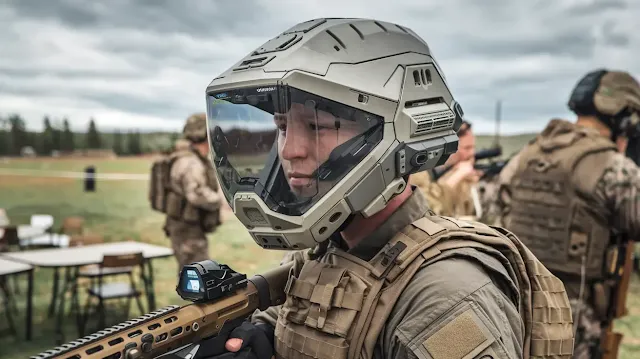How Technology Is Transforming the American Armed Forces
Unlocking the Power of Innovation in Modern Military Strategy
Technology is no longer just a convenience, it’s a strategic force that’s reshaping the very foundation of global defense systems. Nowhere is this transformation more evident than within the American armed forces. From artificial intelligence to space-based capabilities, modern technology is enhancing operational effectiveness, safety, and combat superiority. Let’s explore how these cutting-edge tools are revolutionizing U.S. military power.
Artificial Intelligence and Data Analytics: The Brain Behind Modern Warfare
Smart Decision-Making Through Machine Learning
Artificial intelligence (AI) has emerged as a vital component in military planning and real-time decision-making. Modern AI algorithms can process, and analyze massive datasets within seconds, a task that would take humans hours, if not days. For American troops, this means faster identification of threats, optimized tactical planning, and improved situational awareness.
Data as a Strategic Weapon
Today’s military data is far more than raw numbers. With advanced analytics, data becomes a predictive tool. The U.S. military leverages historical patterns and real-time intelligence to anticipate enemy actions, allocate resources more efficiently, and minimize risks. This shift from reactive to proactive strategy marks a true revolution in combat readiness.
Drone Technology: Precision from Above
Unmanned Aerial Systems Redefining Reconnaissance
Drones have become the eyes and ears of the battlefield. They provide unmatched aerial surveillance, allowing forces to assess threats, track movements, and gather intelligence without endangering personnel.
Tactical Strikes and Remote Combat
More than just observers, modern military drones are equipped with smart targeting systems and payloads. They can carry out precision strikes on high-value targets, reducing collateral damage, and offering a new level of strategic flexibility in complex combat zones.
Virtual and Augmented Reality: Training for Tomorrow
Immersive Combat Simulations
Virtual reality (VR) is revolutionizing how soldiers train. Instead of relying solely on traditional exercises, troops now engage in fully immersive simulations that replicate real-world combat situations. These virtual environments offer risk-free training experiences while sharpening decision-making under pressure.
Augmented Reality on the Front Lines
Augmented reality (AR) enhances battlefield awareness by overlaying critical information, such as maps, target locations, and mission data, onto a soldier’s field of vision using smart goggles or headsets. This technology improves real-time decision-making and operational precision during live missions.
Space Technology: The New Strategic Frontier
Satellites in Defense and Communication
Space is becoming an integral part of modern military dominance. The American forces now rely heavily on satellite technology for encrypted communication, intelligence gathering, and surveillance across the globe.
Space as a Battleground
The militarization of space is a growing reality. Satellites are now used not only for observation, but also for disabling enemy networks, tracking missile launches, and maintaining technological superiority in low Earth orbit. Control of this domain is crucial to national security.
Cybersecurity: Defending the Digital Frontline
Protecting Military Infrastructure in a Digital Age
As military systems become increasingly digital, so do the threats they face. Cybersecurity has evolved into a critical layer of defense, shielding sensitive data and mission-critical systems from cyberattacks.
Investing in Digital Armor
The U.S. Department of Defense continues to invest in advanced encryption, threat detection, and cyber response tools to protect its networks. One breach could compromise entire operations, which is why cybersecurity remains a top military priority.
Robotics in Combat: From Sci-Fi to Battlefield Reality
Robotic Units for Risk-Free Recon
Ground-based robots are no longer concepts from futuristic films, they’re active components of military missions. These robotic systems can scout hazardous areas, defuse explosives, and gather intelligence, keeping human troops out of harm’s way.
Autonomous Combat Support
Some robots are equipped to assist in combat, capable of carrying weapons, or delivering supplies under fire. As robotic technology advances, the potential for fully autonomous combat systems is becoming increasingly realistic.
Conclusion: The Future of Warfare Is Technological
The integration of advanced technology into the American armed forces is not just an upgrade, it’s a full-scale transformation. From drones and data to AI and augmented reality, these innovations are redefining strategy, efficiency, and global dominance.
As the landscape of warfare continues to evolve, one thing is clear: staying ahead in technology means staying ahead in security. The military of the future is smarter, faster, and more connected, and it’s already here.
Interested in learning more? Dive deeper into topics like AI in national defense, the role of satellites in modern warfare, or the ethical implications of autonomous military technology. Ask your questions below, and let’s explore the future of defense together.




Write a comment, your opinion matters to us